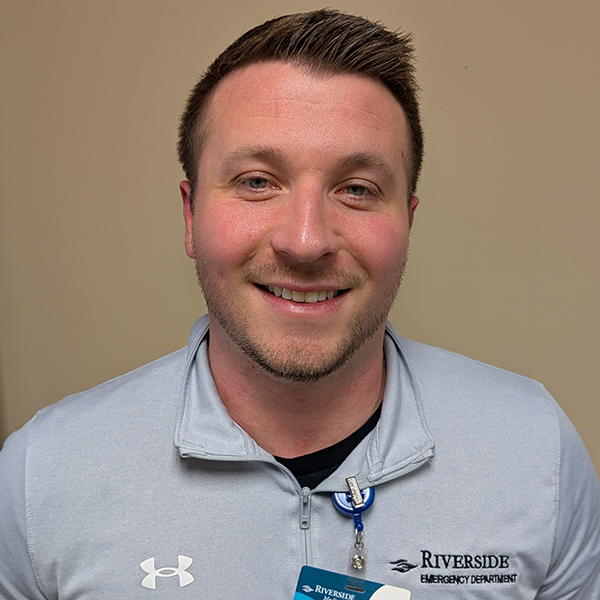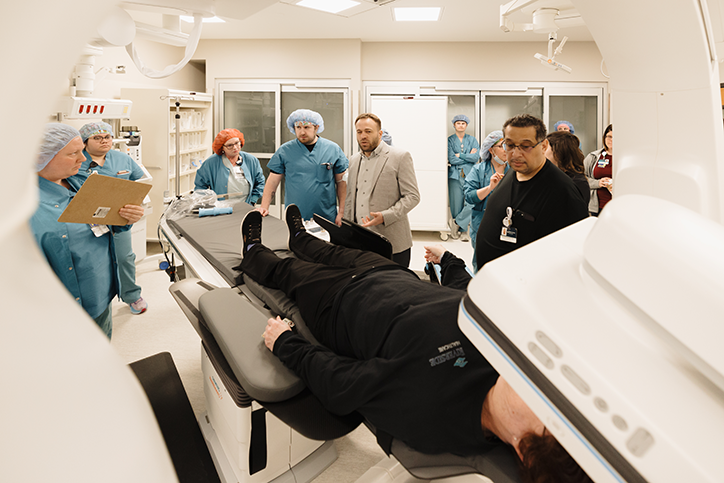ER to Biplane - Riverside's Advanced Stroke Care
May 8, 2025The Emergency Department’s Role in Treating Strokes
 When it comes to stroke care, every second counts—and the emergency department (ED) is often the critical first stop on a patient’s journey to recovery. As the frontline of acute medical care, ED teams play a pivotal role in quickly identifying stroke symptoms, initiating life-saving interventions, and coordinating with neurology and radiology specialists to deliver timely treatment.
When it comes to stroke care, every second counts—and the emergency department (ED) is often the critical first stop on a patient’s journey to recovery. As the frontline of acute medical care, ED teams play a pivotal role in quickly identifying stroke symptoms, initiating life-saving interventions, and coordinating with neurology and radiology specialists to deliver timely treatment.
This article explores the emergency department’s essential responsibilities in stroke management, from rapid triage and diagnosis to the administration of clot-busting therapies and rehabilitation. Drew Ogrentz, Clinical Manager in the Riverside Healthcare Emergency Department, shares his unique expertise.
Recognizing Stroke Symptoms: BEFAST
BEFAST is a quick and effective acronym used to recognize the signs of a stroke, emphasizing how suddenly symptoms can appear. It stands for:
- Balance—sudden loss of balance
- Eyes—sudden vision changes or blurred vision
- Face—facial drooping, typically on one side
- Arms—one-sided arm weakness or inability to hold both arms up
- Speech—slurred or impaired speech
- Time—highlighting the urgency of knowing when the person was last seen “normal,” as this determines the treatment window
Emergency responders rely on this information to act swiftly and potentially save lives. “Patients having any of these symptoms should immediately seek treatment,” urges Ogrentz. “Time is brain. The quicker you can get to us, the quicker we can start treatment. We can treat strokes up to twenty-four hours. So, if you go to bed and you're perfectly normal and you wake up and you're having these symptoms, we still want you to come in and undergo an assessment. Even if you're outside that twenty-four hours, you should still see a provider.”
Technology Involved in Stroke Diagnosis
When a stroke patient arrives at the emergency room, the ambulance team has already alerted the hospital, triggering a "code stroke" to activate the stroke response team. The patient is met at the door by a physician who conducts an immediate assessment, including checking the airway, before the patient is taken directly to a nearby CT scanner for a rapid brain scan. The scan helps confirm the stroke diagnosis quickly so treatment can begin without delay. The hospital also collaborates with neurologists from Rush Medical Center in Chicago to support expert care.
Ogrentz notes that cutting-edge technology plays a role in stroke diagnosis and subsequent treatment. “We have a robot in our ER. It allows us to almost FaceTime with neurologists. They're able to do a quick assessment and we can see where that stroke is coming from,” he explains. “If it's deemed you're in a four-hour window of the stroke’s onset, that's the time we really try to narrow that down to, we could give you a medication called tenecteplase. It's a clot-buster. It has its risk, but it has great positive benefits, too, if we can get that to you in a timely manner.”
Another tech-focused solution is artificial intelligence (AI) with the implementation of Viz.ai, an AI system that instantly analyzes CT scans. Unlike traditional methods that require a radiologist to manually read images, Viz.ai provides immediate results, enabling doctors to make faster, more informed treatment decisions—often by the time the patient returns from the scan.
“Like I keep saying, time is brain. So, if we can narrow that timeframe up as much as possible, that helps us treat the patient,” shares Ogrentz.
Keeping Stroke Treatment in the Community
Riverside has also recently developed a neurointerventional suite equipped with a biplane angiograph system, allowing for advanced 3D brain imaging. This technology enables specially trained neurologists to perform clot retrieval procedures for certain types of strokes directly at Riverside. Previously, patients with these stroke types had to be transferred to larger tertiary centers like Rush. Now, with this capability in-house, patients can receive advanced care locally—keeping them close to home and family during critical moments.
“The biggest takeaway is just to be able to recognize the symptoms,” states Ogrentz. “And, know that Riverside is really a one-stop shop in this area. Because, unfortunately, with a stroke, you do have to go through rehab after. At Riverside, you can come to the emergency room, we can do those procedures, you can get your care at Riverside, and then you can also rehab at Riverside after your stroke. Those resources are available in your community. You don't have to go to Chicago to get those services.”
To learn more about Riverside Healthcare's area-leading stroke and neurovascular care, visit myrhc.net/strokecare or call (815) 935-0750.
